The Valais did it right.
After the red Dôle (1959), they also protected the white Fendant (1966) – and made them the two best-known Swiss wines.
Fendant is cultivated throughout the Valais wine-growing region, where it accounts for around 17% of all vines.
Last year, an average of 3.9 million kilos of Chasselas were harvested annually in Valais, which corresponds to a production of 10.6 million liters of Fendant. 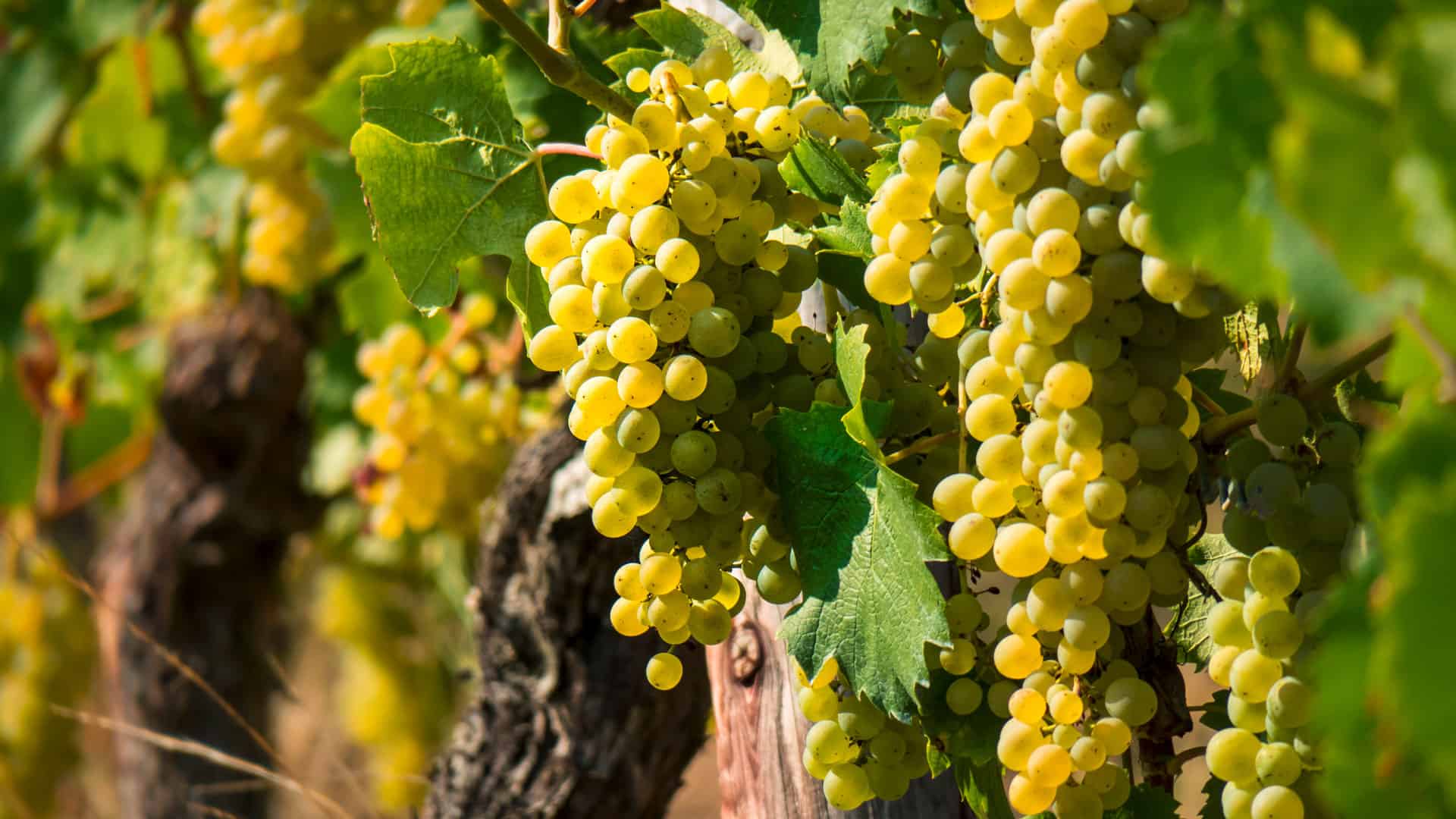
Fendant – how it got its name
Chasselas is the name of the grape and the wine in French-speaking Switzerland.
Fendant is its name in Valais.
Chasselas is said to have been cultivated in the village of Chasselas (Département Saône-et-Loire) in France.
The German name “Gutedel” first appears in history in 1621, the French name “Fendant” around the same time.
The name is derived from the French word for split, “fendre” (la fente, the split): The berries can be split into skin and pulp – without the fruit juice running out – by applying light finger pressure.
History records fendant from the early 18th century onwards.
First in Vaud, later in Valais.
The name Fendant has survived here.
The variety was introduced in 1850 and the name was protected in 1966.
Since then, it has been the second most important variety after Pinot Noir.
Fendant – a sensitive Valais wine
This early-ripening grape, which is delicate both on the vine and in the wine cellar, produces subtle and elegant wines.
Diego Mathier: “Chasselas is so subtle and elegant that it never saturates.” But that also makes it difficult to vinify.
“It starts in the vineyard. The variety is very susceptible to disease. It’s also difficult in the cellar. Fendant is so neutral that even the smallest mistake can have devastating effects.” With Fendant, it is ideal if it is drunk young within 3 years – at 8 to 10 degrees.
Fendant – the social Valaisan
Fendant is also a social wine.
It is drunk on every occasion.
At weddings, births, funerals, after signing contracts, for aperitifs – in fact, almost always.
Even though the area under Chasselas vines in Valais has halved in the last 30 years, Chasselas is being planted again.
In Switzerland as a whole, however, it has lost its position as the most cultivated grape variety to Pinot Noir. 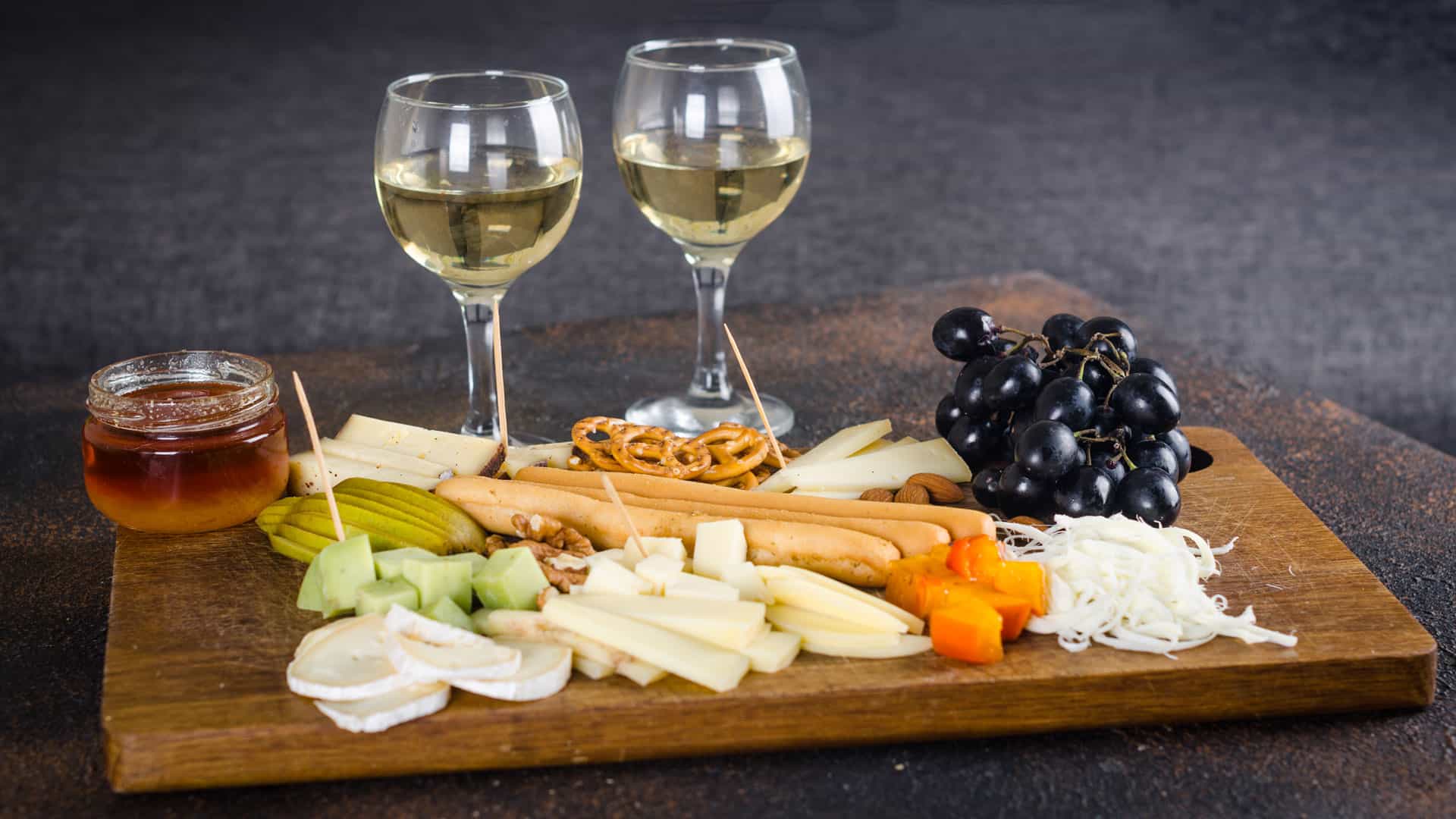
Fendant – character and aromas
This wine usually presents itself with a pale yellow color.
The nose typically reveals notes of lime blossom paired with hints of lemon and grass.
On the palate, Chasselas is usually slightly drinkable, fresh and fruity at the same time.
It is ideal as an aperitif and, not least thanks to its citrus notes, also goes very well with freshwater fish and shellfish dishes.
Fendant – our selection
The Adrian and Diego Mathier Nouveau Salquenen winery has four different Fendant wines on offer.
All have won outstanding awards.
They all undergo alcoholic fermentation and acid reduction in stainless steel tanks.
The Fendant “Ravin” is fruity, drinkable and dry – the rustic wine that has already won the world championship title.
The three wines from the Terre promise line are noble.
The “Ville de Sion” is typical of the variety, suitable for lovers of dry Chasselas.
The “Molignon” is a noble Chasselas, mineral, fruity and dry.
The “Ville de Sierre” has a refined fruitiness.
Fendant Du Ravin – a world champion for every occasion
This wine is remarkably fruity.
Elegant, harmonious and dry, it is a wine for every occasion.
The name “Du Ravin” (meaning gorge) tells the story of a proud Valais knight who saved himself from Bonaparte’s French with a daring leap across the Dala Gorge (label).
The people of the Upper Valais rose up against the French twice in 1798 and were defeated at both Pfyn battles.
The wine presents itself like the daring knight: proud, determined and with Valaisan characteristics.
And this is probably one of the reasons why it has already been crowned world champion at the Mondial du Chasselas. 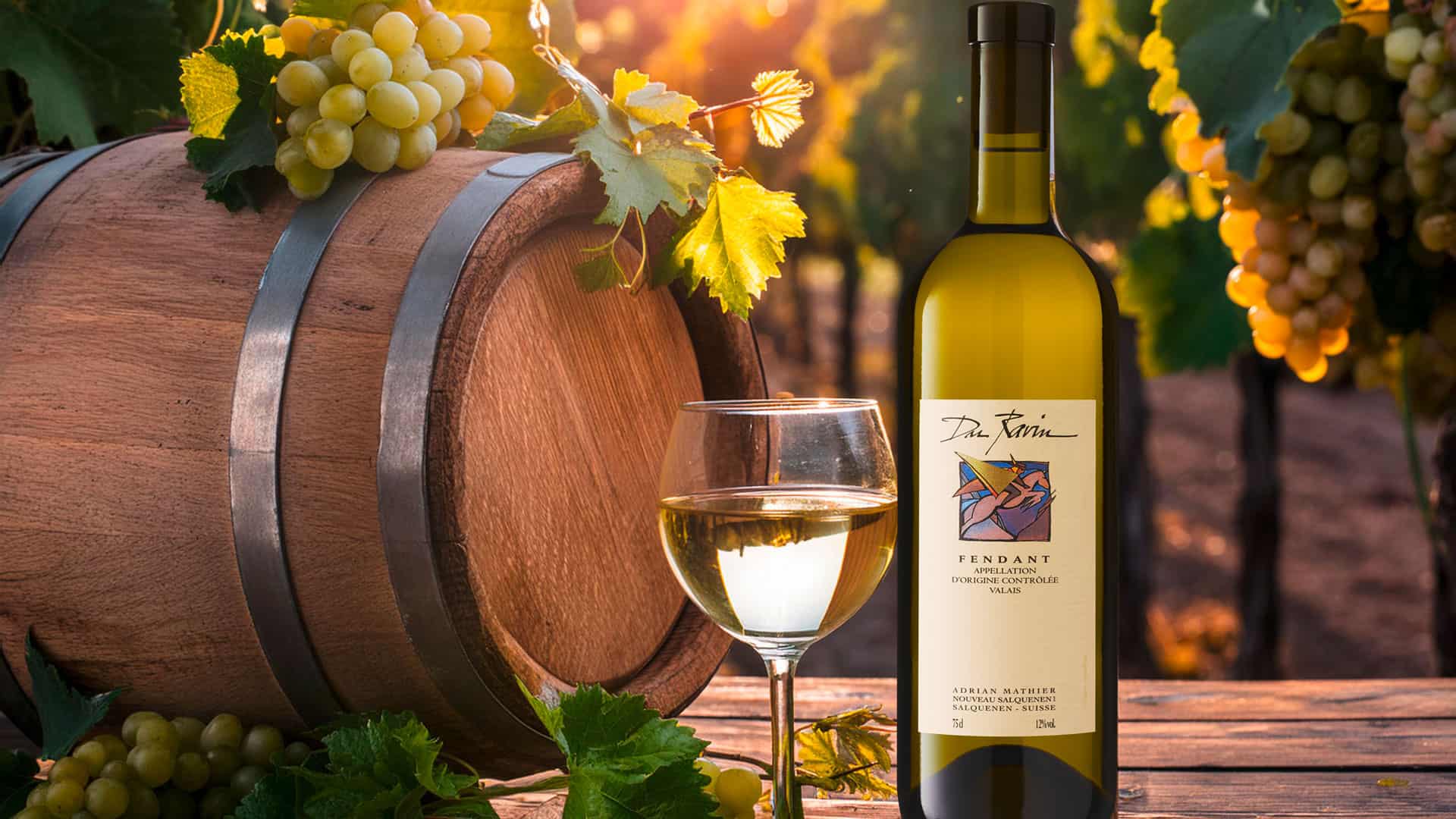
Fendant Terre Promise – Diego’s cult wine from the promised land
The Diego and Adrian Mathier Nouveau Salquenen winery offers three superb Fendants in its “Terre Promise” line: Ville de Sierre, Molignon and Ville de Sion.
Terre Promise means the promised land.
The terroir is extremely important for these three wines.
Terroir does not just mean the soil, but also the location: the sunlight, the microclimate, the soil composition, the water quality and much more.
While in many wine-growing regions the soils are almost homogeneous, Valais has geological rock formations of incredible complexity: Hills of scree, as well as gravelly slopes and hilltops, steep rock faces with intense sunlight, glacial moraines and scree slopes.
The Ville de Sierre and Molignon are available from the smallest (37.5 cl) bottle to the standard (75 cl) and magnum (1.5 liters).
So every thirst is quenched. 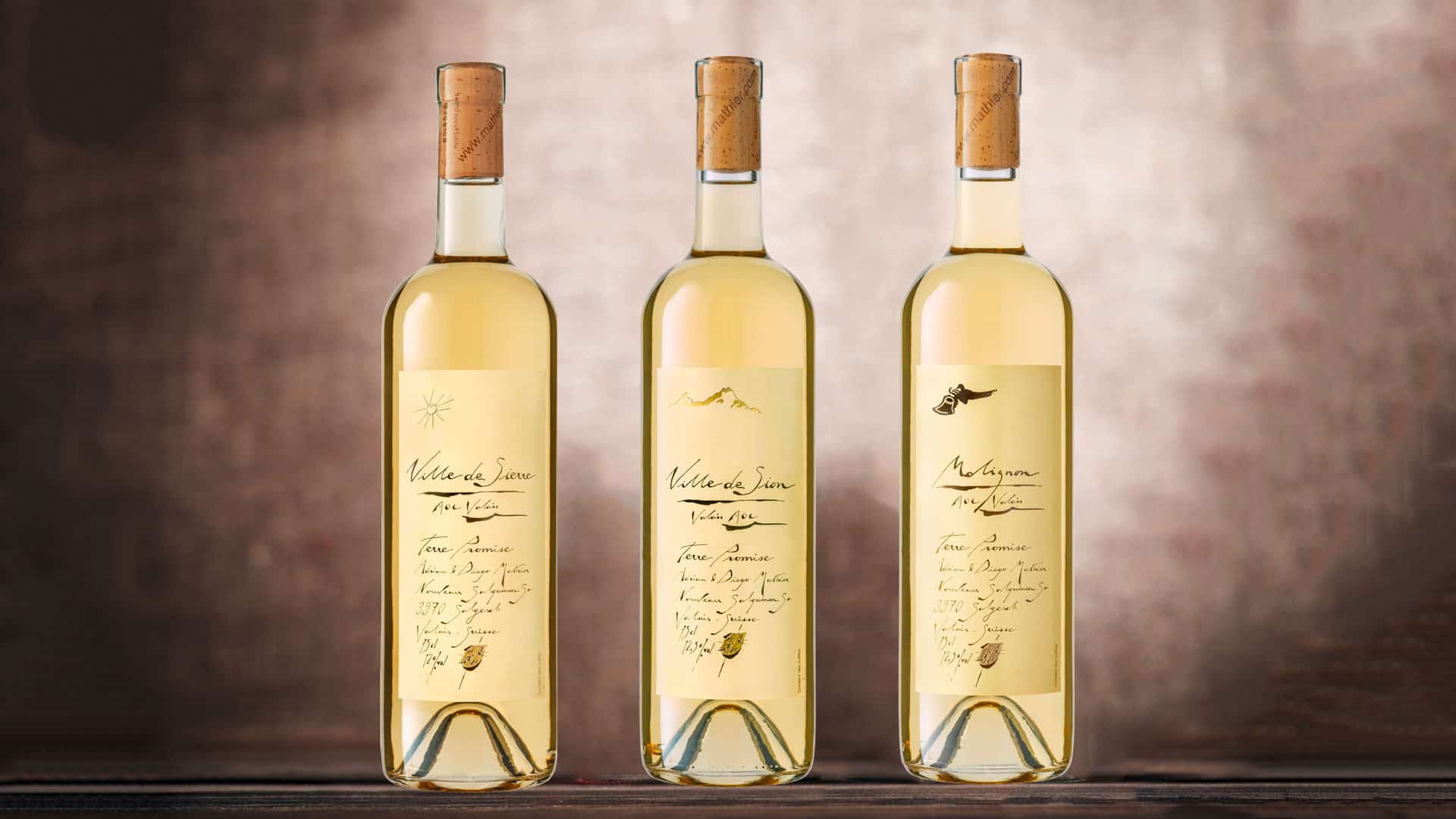
Fendant Ville de Sierre – refined fruitiness
Salgesch is part of the Sierre/Siders wine region.
The approximately 5,000 plots are owned by 2,500 owners.
The vines thrive on the hills of Sierre, on lean soils made of rubble.
With around 300 days of sunshine a year, the town of Sierre proudly bears the sun on its coat of arms.
The sun-kissed grapes give the young wine a refined fruitiness.
It elegantly rounds off the youthful fruit of the Ville de Sierre.
During the ripening phase, the grapes are caressed by a light, warm wind.
The label is a tribute to Diego’s grandfather Ferdinand Mathier.
His handwriting inspired the artist to create this label. 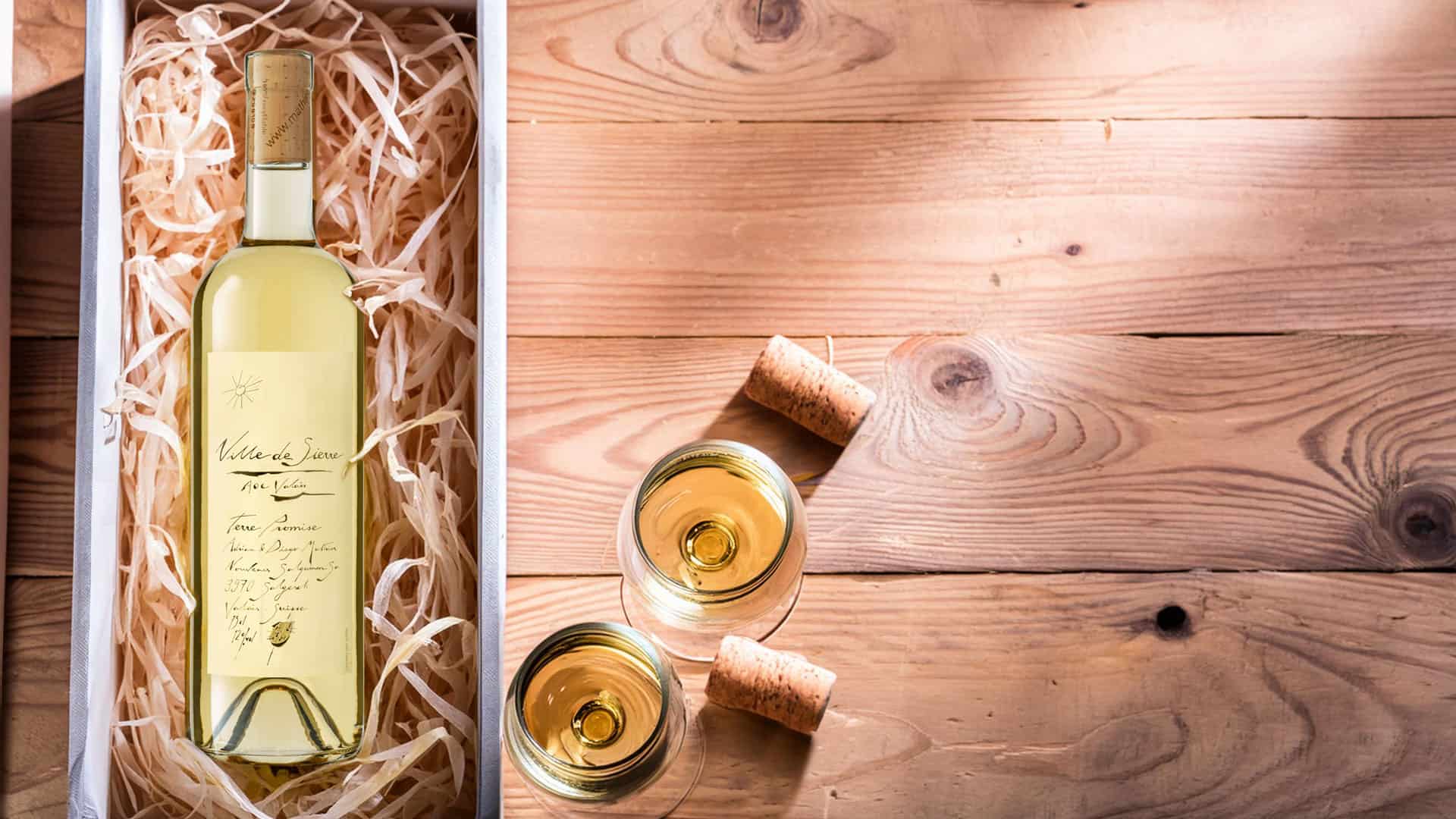
Fendant Molignon – the noble one in Diego’s cellar
This Fendant has a beautiful golden reflection.
It is grown in the hamlet of the same name, Molignon, above the Valais capital of Sion.
The soil is characterized by a high slate content, which is responsible for the minerality and fruitiness of this Fendant.
The south-facing slope protects the vines from frost and allows them to bask in the sun in the evening.
Once again, Ferdinand Mathier is the inspiration behind this label.
The bell stands out at the top left.
It stands for the oldest Valais wind – the foehn.
When it blows properly, the bell rings in the fertility chapel in Molignon.
The vines grow and flourish.
And the winegrower in the valley is happy. 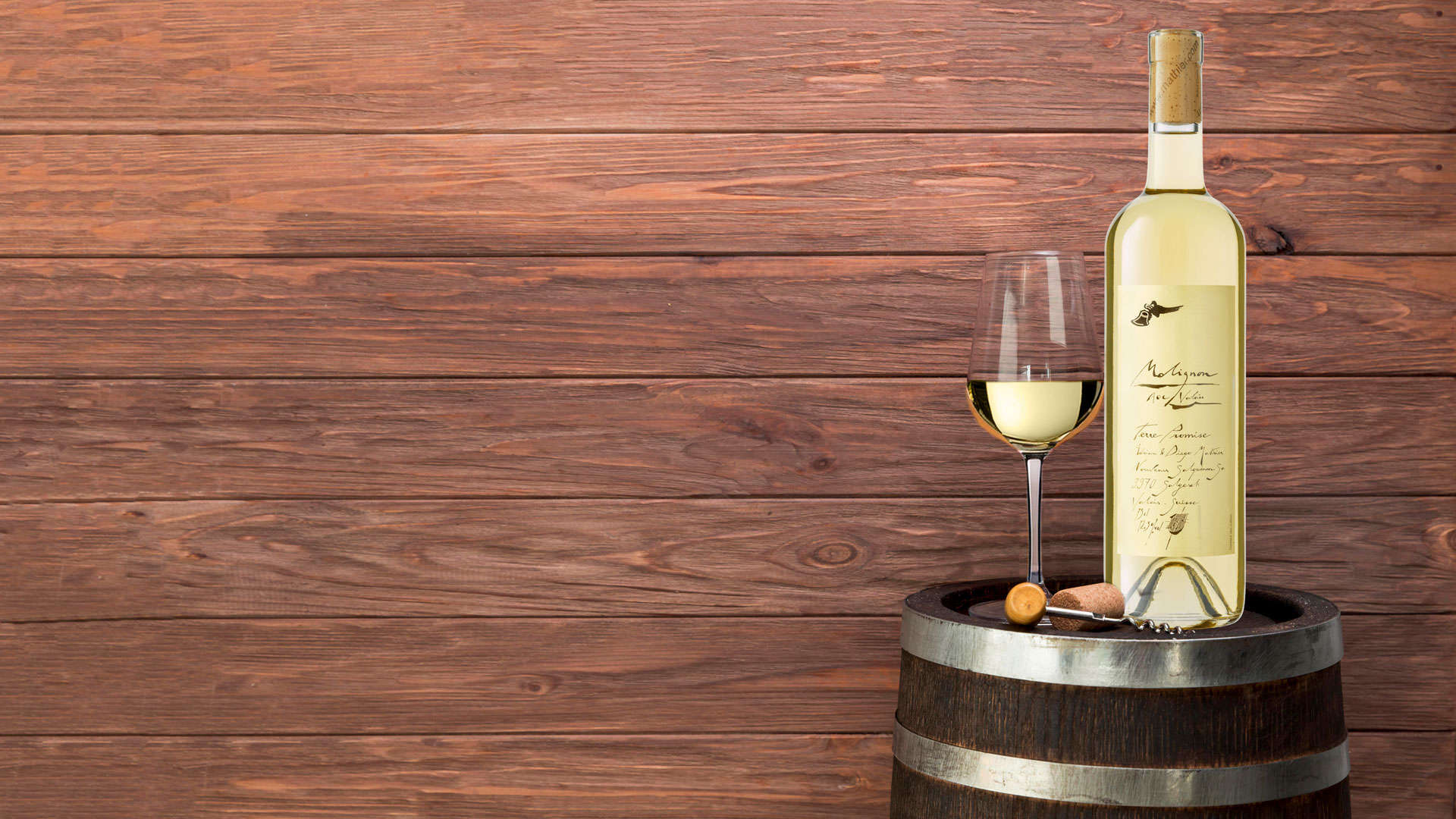
Fendant Ville de Sion – charming and youthful
The Fendant Ville de Sion is grown in the Valais capital on extremely steep slopes.
Due to the spectacular terraced cultivation, the wine receives intense sunlight, which is one of its distinguishing features.
This soil is characterized by its particular fertility and minerality.
The Ville de Sion gains volume and the finest fermentation aromas through the extraction of yeast.
A true varietal Fendant with graceful fruit, delicate mineral notes and a charming youthfulness.
The lettering and the mountain at the top left of the label are once again striking.
This stands for the complex terroir of the Terre Promise, the promised land.
Diego’s wines clearly show how the different terroirs make the Fendant taste different. 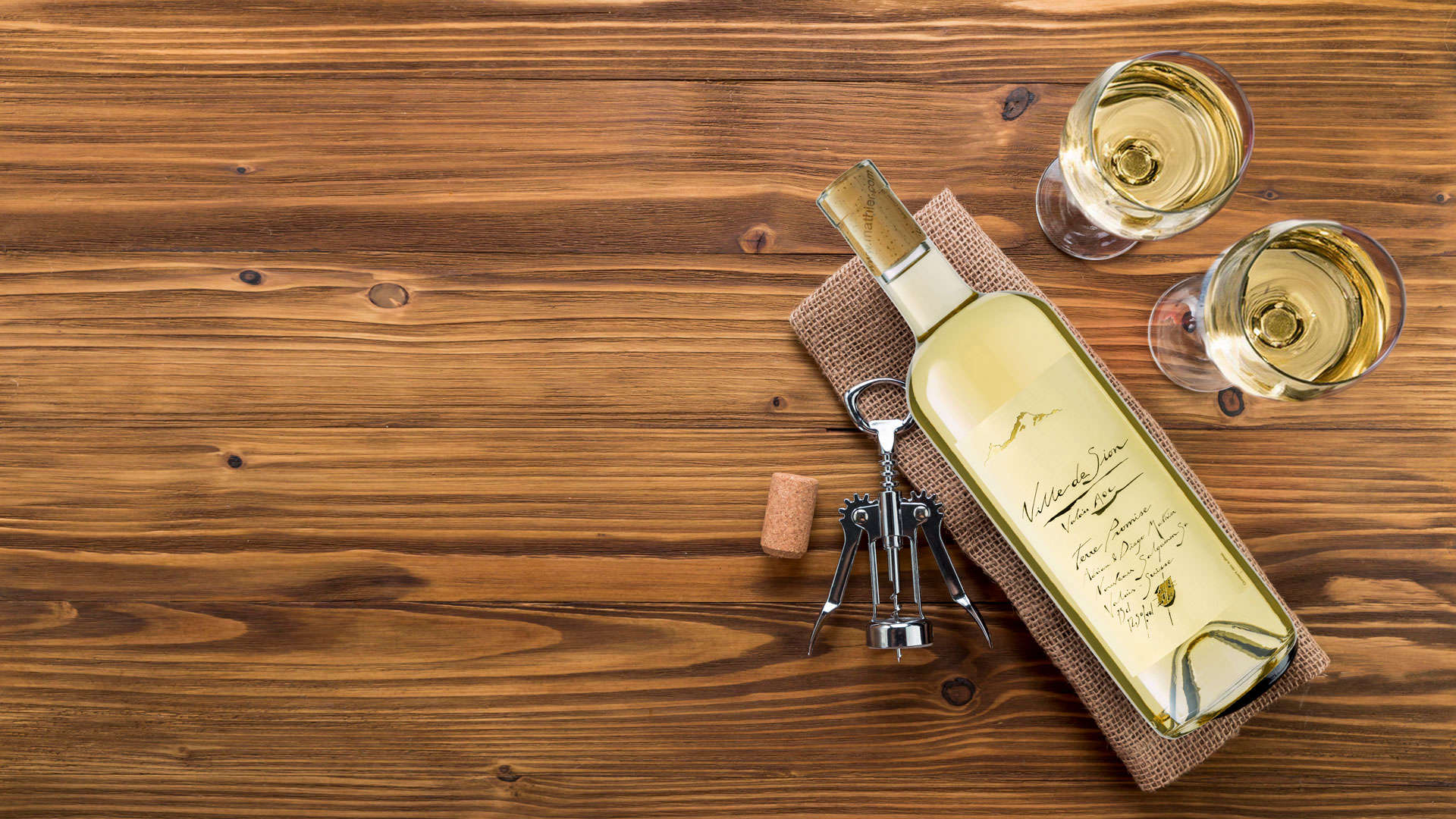 INSERT THE STORE ELEMENT HERE
INSERT THE STORE ELEMENT HERE
Interesting facts about the Fendant
Is Fendant Chasselas?
Chasselas, also known as Chasselas in France and Switzerland and as Fendant in Valais, is a traditional variety of white wine and table grape that is widespread throughout the world.
However, the use of this grape variety for both wine and table grapes is declining worldwide.
Are Chasselas and Fendant the same thing?
What is the difference between Fendant and Chasselas?
Quite simply: there is none!
Chasselas and Fendant are identical, only the names vary depending on the region.
While the name Chasselas tends to be used in the canton of Vaud, the name Fendant is more commonly used in Valais.
Is Fendant dry?
Fendant is a dry and mild white wine with a low alcohol content that is grown exclusively in the Swiss canton of Valais.
It is AOC-certified and is made exclusively from the grape variety known to German speakers as Gutedel and to French speakers as Chasselas.
Which grape is in the Fendant?
Chasselas is a white grape variety from Switzerland, which is called Fendant in Valais.
Around 35,000 hectares of vineyards worldwide are planted with Chasselas; 4,073 hectares in Switzerland, of which 2,365 are in Vaud and 1,072 in Valais (2,010), where the variety is called Fendant. What is Chasselas called in Switzerland? Chasselas, also known as Chasselas or Fendant in Switzerland, was once a widespread grape variety.
Nowadays, stocks are in sharp decline worldwide.
Only in Switzerland and in the Markgräflerland region of Baden is the fruity, tangy Fendant still cultivated on a large scale. 

